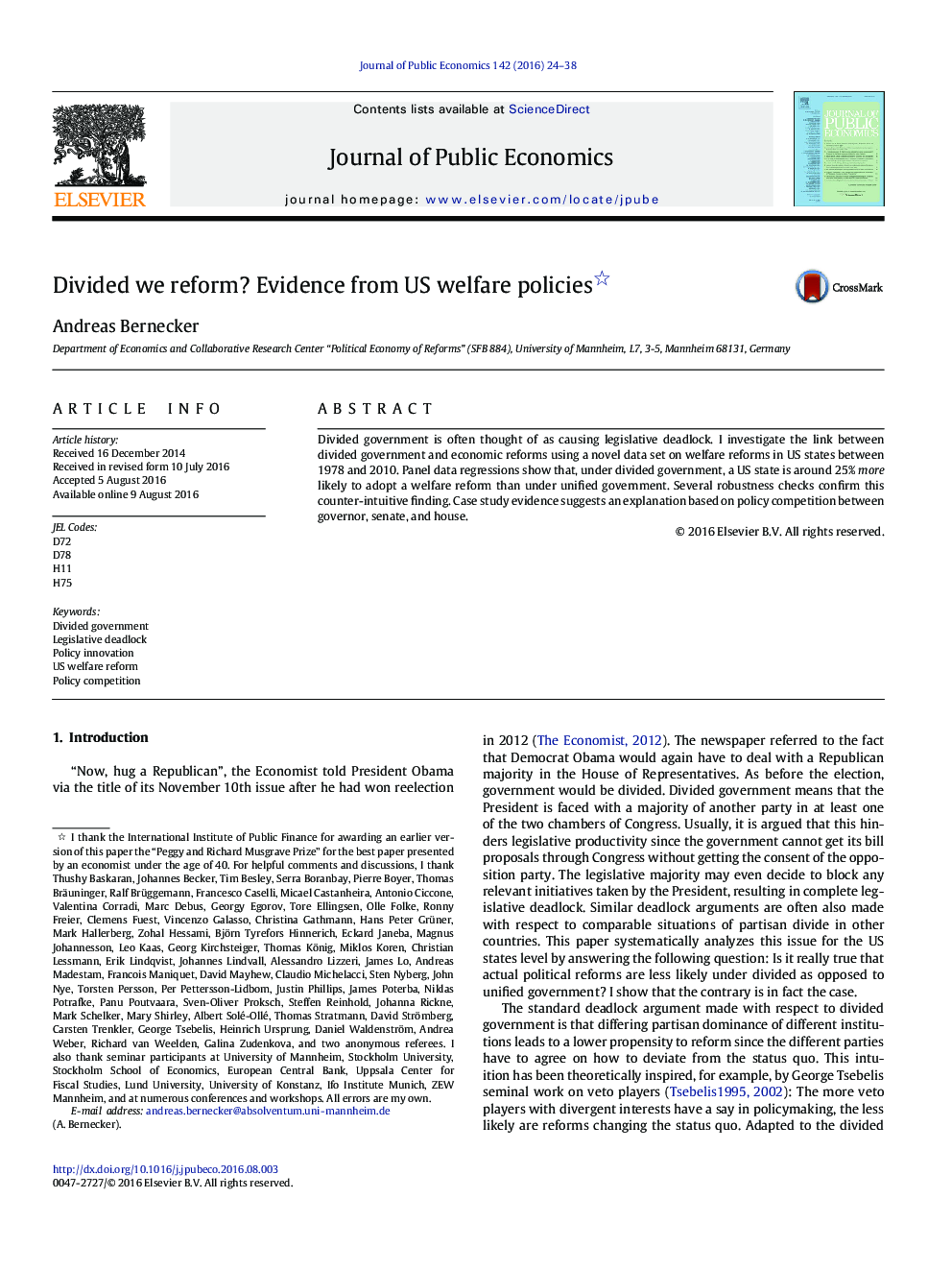| Article ID | Journal | Published Year | Pages | File Type |
|---|---|---|---|---|
| 969644 | Journal of Public Economics | 2016 | 15 Pages |
•Divided government is often thought of as causing legislative deadlock.•This paper uses data on US welfare reforms at the US state level to test this view.•Divided governments are 25% more likely to reform than unified governments.•Several robustness checks confirm this counter-intuitive finding.•Case study evidence suggests an explanation based on policy competition.
Divided government is often thought of as causing legislative deadlock. I investigate the link between divided government and economic reforms using a novel data set on welfare reforms in US states between 1978 and 2010. Panel data regressions show that, under divided government, a US state is around 25% more likely to adopt a welfare reform than under unified government. Several robustness checks confirm this counter-intuitive finding. Case study evidence suggests an explanation based on policy competition between governor, senate, and house.
